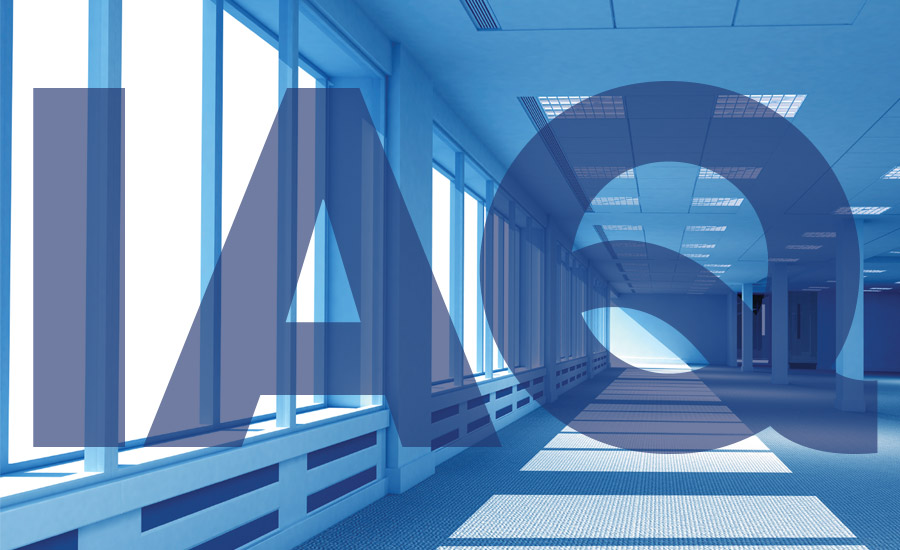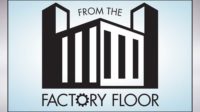Whether it’s a pharmaceutical manufacturing plant or an auto assembly facility, proper IAQ is critical within an industrial environment.
Because these buildings have numerous processes happening inside that can significantly affect worker productivity, engagement, and comfort, ASHRAE Standard 62.1 is often the first place HVAC experts turn for IAQ guidance.
ASHRAE Standard 62.1 is the recognized standard for ventilation system designs within industrial buildings. First published in 1973, this standard specifies ventilation rates and other measures for providing comfortable, cleaner indoor air for people working inside new and existing buildings.
While ventilation is certainly a part of effective IAQ, it’s a mistake to assume contaminant removal is the only component to comfort. Temperature must not be left out of the equation.
Improving IAQ with Make-up Air
Simple ventilation fans can help address fresh air challenges, but to fully maximize IAQ in industrial environments, make-up air units (MUAs) are often required.
MUAs use 100 percent outside air to provide ventilation or exhaust replenishment for a building. These units condition the outside air through various means and designs, including:
- Straight make-up air units, which bring outside air into the building;
- 80/20 units, which recirculate certain amounts of inside air and draw in other amounts; and
- High-temperature heating and ventilation units (HTHVs), which provide heat in addition to ventilation.
By their definition, MUAs provide ventilation or make-up air that a facility is mechanically exhausting. Understandably, it seems counterintuitive to use equipment ventilating a facility with outside air to also heat a facility. HTHV units can do this by discharging the air at up to 160°F as opposed to the 110° and 120° discharge temps of other MUAs.
Heating and cooling with MUAs
HTHV MUAs put dramatically less cfm of air into the space than normal MUAs, making them an efficient heating solution in colder climates. In warm climates, where the air needs to be cooled, MUAs can include a hydronic, direct expansion, or evaporative technology to cool the air before entering the building.
When heating the air, MUAs draw on either direct- or indirect-fired technology. Most direct-fired MUAs have a thermal efficiency of 92 percent. Because the products of combustion go into the space, they must meet the ANSI z83.4-2017 standard for non-recirculating, direct gas-fired heating and forced ventilation appliances in commercial and industrial applications.
By contrast, indirect-fired MUAs use a heat exchanger, with the products of combustion being exhausted out of the building through their flue. While the exchanger often makes them less efficient than direct-fired MUAs, indirect-fired units may be more suitable for environments where products of combustion cannot enter the space, such as pharmaceutical clean rooms.
Retrofitting for comfort and ventilation
Over time, buildings can fall victim to imbalanced airflow, pressurization, and temperature variation, particularly if the facility has expanded and/or additional exhaust or ventilation equipment has been installed without consideration of how the new units react with existing equipment across the entire structure.
To fully maximize IAQ, industrial facilities often require in-depth studies of the amount of exhaust cfm and the location of exhaust fans.
A major automotive supplier recently approached Cambridge Engineering with an issue like this. For years, the manufacturer had used HTHV units to offset the fumes of its robotic welding stations, keeping its employees comfortable and breathing clean air.
However, as the facility added more welding stations, it installed exhaust fans to meet the IAQ requirements of ASHRAE Standard 62.1. While air within the facility continued to circulate, indoor temperatures could not keep up with the cold winter temperatures outside.
The supplier’s facility manager embarked on weeks of study with a mechanical contractor and manufacturing technician, running the HTHV units in ventilation mode to provide 100 percent outside air. The team determined the exhaust fans were depleting more cfm of air than the HTHV units were replacing. In fact, a majority of the heat was being exhausted by the fans.
To bring the environment back into balance, the contractor recommended retrofitting the facility with MUAs that could offset the exhaust fans’ cfm while existing HTHV units continued satisfying the heat load.
Balancing act
Manufacturers that pride themselves on quality and timely delivery know the impact a comfortable working environment can have on the productivity and engagement of their employees.
When embarking on a retrofit, an experienced engineer should walk the building to determine exhaust cfm levels, types of ventilation equipment and their locations so that the new equipment is working in conjunction with one another and not against each other.






